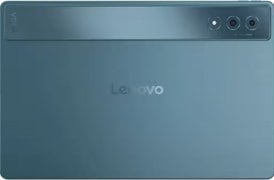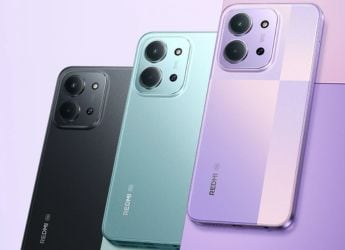- Home
- Mobiles
- Mobiles Features
- The Life of an Apple Supplier Is Getting Even Tougher
The Life of an Apple Supplier Is Getting Even Tougher

Imagination Technologies Group discovered how fickle life can be as an Apple supplier when it was ditched this month by the iPhone maker. More suppliers may suffer the same fate as the world's largest technology company faces a shrinking number of semiconductor makers and expands into areas that need special chips designed in-house.
Dialog Semiconductor, Synaptics and Cirrus Logic are particularly vulnerable to Apple's supply chain whims and demands, according to analysts. One component supplier, Avnet Inc., stopped working with Apple because the relationship was squeezing its profit margins too much.
Apple has developed its own processors for years, but has stepped up in-house design of components, including graphics, Bluetooth and other smartphone-related chips, in recent years. That's expensive, and creates new risks, but it helps the company maintain leverage over suppliers as a recent wave of acquisitions cut the number of chipmakers it works with.
To secure cheaper prices, Apple likes to have at least two suppliers for any given component. But last year alone, one in five US chipmakers were acquired, according to Susquehanna Financial Group. Key Apple suppliers SanDisk Corp., Broadcom, TriQuint Semiconductor, Intersil Corp., Sharp Corp., Elpida Memory Inc., RF Micro Devices Inc. and Fairchild Semiconductor International have all been snapped up since 2013.
Loop Capital Markets analyst Betsy Van Hees, has seen 35 chip companies swallowed since 2014. "You have less competition, less pricing pressure," she said. "Which may be why Apple is going more internally than externally." In the past, it was easier for Apple to squeeze outside suppliers to improve profit margins, she added.
This year is particularly important for Apple because it's preparing to launch three iPhones, including a flagship device with a major new design. The installation of new manufacturing lines and processes is costly, so Apple needs to find savings elsewhere. "To avoid taking a hit you put some pressure" on the suppliers, BGC Partners analyst Colin Gillis said.
Cost isn't the only incentive for Apple to develop its own components. It also helps the company couple its hardware more seamlessly with its software, Chief Financial Officer Luca Maestri explained at a Feb. 14 conference in San Francisco. "We have better control over timing, over cost, over quality," he said.
Expansion into new markets and products may also require hardware unique to Apple's needs that isn't immediately available from outside suppliers. The AirPods Bluetooth headphones, released last year, use low-energy communications chips that Apple got through its purchase of Passif Semiconductor Corp. in 2013. In 2012, Apple spent $356 million acquiring AuthenTec Inc., which had fingerprint sensors and related chipsets that helped build the fingerprint scanner on the iPhone.
Apple was in acquisition talks last year with Imagination Technologies. The Kings Langley, England-based company designs a type of chip called a graphics processing unit that's used in iPhones and iPads, and analysts theorised Apple wanted to take the technology in house and push it forward on its own terms. Apple decided against making an offer.
Then, on April 3, Imagination said Apple would stop using its graphics technology after developing its own solutions. Apple also hired several employees from Imagination, including former Chief Operating Officer John Metcalfe. The British company lost about two-thirds of its market value that day. On Wednesday, UBS estimated Apple will pay Imagination one-third of its current royalty rate as their relationship winds down over the next two years.
That prompted analysts and investors to cast a keener eye over what other suppliers may be next. One immediate example was Dialog, which slumped 20 percent April 11 after Bankhaus Lampe analyst Karsten Iltgen suggested Apple may cease using Dialog's power-management chips. Apple is setting up power-management design centers in Munich and California, Iltgen noted, and there's been a steady flow of engineers from Dialog to Apple over the past year.
Synaptics Inc., whose products help control the iPhone's touch screen, could also be vulnerable, Pacific Crest Securities analyst John Vinh wrote in an April 12 note. Apple has hired "a significant number" of engineers from the company, suggesting that it's working on products that would render Synaptics redundant, Vinh said.
Vinh also highlighted Cirrus Logic, which makes audio chips used in iPhones, even as he deemed the risk of Apple developing its own competing components "medium to low."
Hiring in-house experts doesn't come cheap (Cirrus spends $200 million a year on research, Vinh noted). In the past five years, Apple doubled research and development spending as a percentage of revenue, an increase CFO Maestri attributed to new product categories and developing more of its own underlying technology, among other factors.
Semiconductor research is among the most expensive in the technology industry, often exceeding 18 percent of revenue. Apple spends 4.7 percent of its income on R&D, up from 2.2 percent in 2012.
The pay-off from the investment could be substantial. Semiconductors account for about a third of iPhone manufacturing costs, according to Timothy Arcuri, a Cowen & Co. analyst. Tapering growth of smartphone sales has meanwhile heightened the need to squeeze every last dollar of profit out of the handsets that Apple does sell.
The main risk is that Apple misses new technology trends that bubble up through a large supply chain. Relying more on internally created components, it'll have fewer suppliers lining up to show it the latest innovations. When Nokia was the world's largest mobile phone maker, it focused more on cost cutting and controlling component supply and missed out on important changes in the market, according to Mike Walkley, an Apple analyst at Canaccord Genuity.
"You've seen what they've done to Imagination and Dialog Semi and all of these people who supply to Apple," he said. "It's kind of what Nokia did back in the day when they were king of the world." An Apple spokesman declined to comment.
Then there's the risk that some partners decide they don't want to deal with Apple anymore. Bill Amelio, former chief executive officer of Lenovo Group Ltd. who now runs Avnet, said he walked away from supplying Apple and it's helped improve earnings.
The Phoenix, Arizona-based distributor of chips and other computer components had a gross profit margin of 13.7 percent in its most recent quarter. That's 2 percentage points wider than it was a year earlier -- thanks in part to cutting ties with Apple.
© 2017 Bloomberg L.P.
Get your daily dose of tech news, reviews, and insights, in under 80 characters on Gadgets 360 Turbo. Connect with fellow tech lovers on our Forum. Follow us on X, Facebook, WhatsApp, Threads and Google News for instant updates. Catch all the action on our YouTube channel.
Related Stories
- Samsung Galaxy Unpacked 2025
- ChatGPT
- Redmi Note 14 Pro+
- iPhone 16
- Apple Vision Pro
- Oneplus 12
- OnePlus Nord CE 3 Lite 5G
- iPhone 13
- Xiaomi 14 Pro
- Oppo Find N3
- Tecno Spark Go (2023)
- Realme V30
- Best Phones Under 25000
- Samsung Galaxy S24 Series
- Cryptocurrency
- iQoo 12
- Samsung Galaxy S24 Ultra
- Giottus
- Samsung Galaxy Z Flip 5
- Apple 'Scary Fast'
- Housefull 5
- GoPro Hero 12 Black Review
- Invincible Season 2
- JioGlass
- HD Ready TV
- Laptop Under 50000
- Smartwatch Under 10000
- Latest Mobile Phones
- Compare Phones
- OPPO A6x 5G
- Samsung Galaxy Z TriFold
- Poco F8 Ultra
- Poco F8 Pro
- Huawei Mate 80 RS Master Edition
- Huawei Mate 80 Pro Max
- Huawei Mate 80 Pro
- Huawei Mate 80
- Asus ProArt P16
- MacBook Pro 14-inch (M5, 2025)
- Poco Pad M1
- Poco Pad X1
- Just Corseca Skywatch Pro
- Honor Watch X5
- Acerpure Nitro Z Series 100-inch QLED TV
- Samsung 43 Inch LED Ultra HD (4K) Smart TV (UA43UE81AFULXL)
- Asus ROG Ally
- Nintendo Switch Lite
- Haier 1.6 Ton 5 Star Inverter Split AC (HSU19G-MZAID5BN-INV)
- Haier 1.6 Ton 5 Star Inverter Split AC (HSU19G-MZAIM5BN-INV)

















